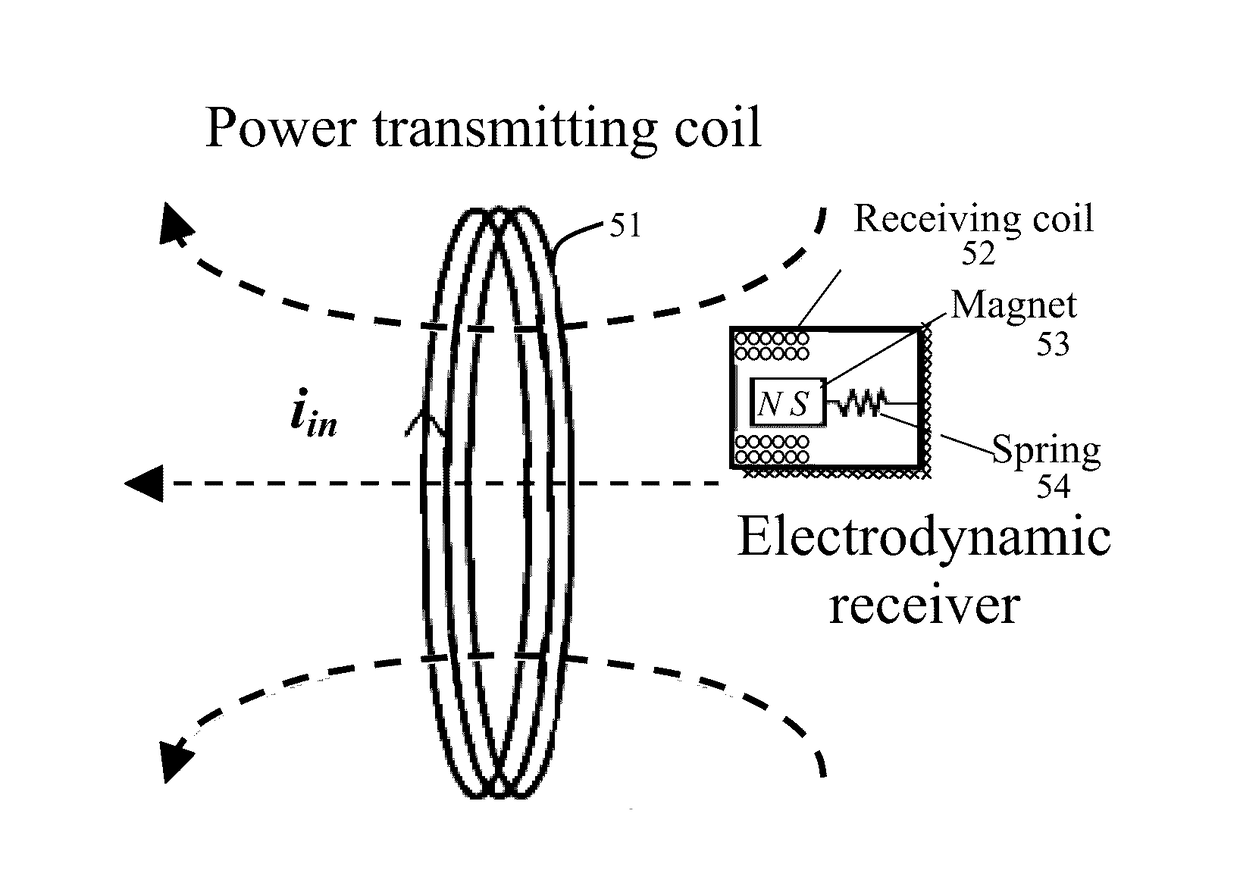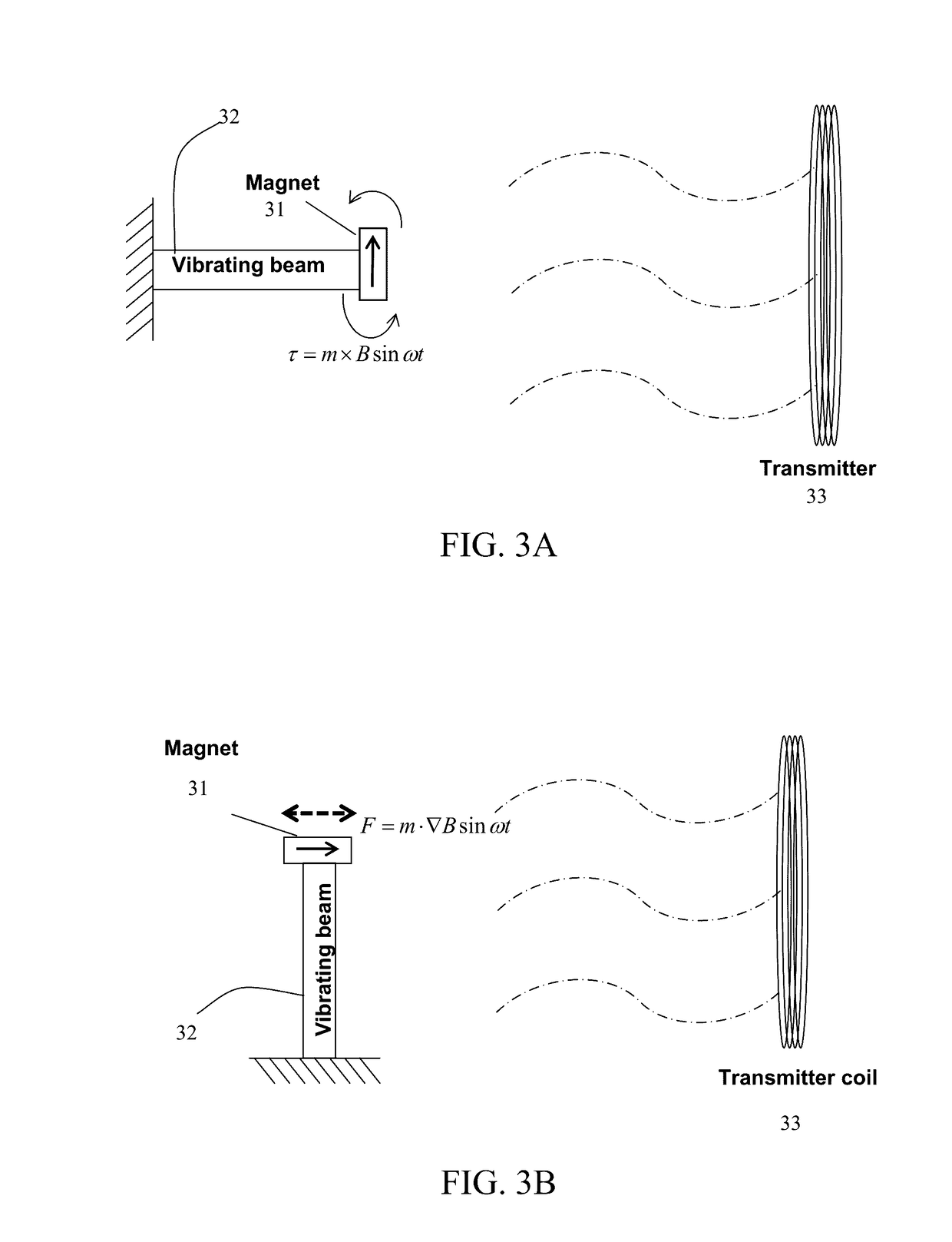Wireless power transfer via electrodynamic coupling
a wireless power transfer and electrodynamic coupling technology, applied in the direction of dynamo-electric machines, electrical apparatus, influence generators, etc., can solve the problems of unstoppable wireless world, unstoppable wireless world, and ever-growing hunger for portable power, so as to reduce the exposure of human body and reduce the operating frequency
- Summary
- Abstract
- Description
- Claims
- Application Information
AI Technical Summary
Benefits of technology
Problems solved by technology
Method used
Image
Examples
Embodiment Construction
[0052]Embodiments of the invention provide wireless power transmission (WPT) systems that actively deliver power from a source to a receiver, providing deterministic control over the power transfer. Embodiments of the invention provide wireless power transfer devices and methods utilizing an electrodynamically coupled approach to WPT. In accordance with certain embodiments of the invention, an electrodynamically coupled WPT system is provided in which a current-carrying coil (transmitter) generates a low-frequency, time-varying magnetic field that induces a sinusoidal mechanical forcing function on a permanent magnet residing on a receiver. The resulting magnet motion (e.g., vibration) can be converted into electrical power via electromechanical conversion. The electromechanical conversion can be electrodynamic, piezoelectric, electrostatic, or a combination of one or more conversion methods.
[0053]The receiver is similar to a vibrational energy harvester, where, in certain embodimen...
PUM
 Login to View More
Login to View More Abstract
Description
Claims
Application Information
 Login to View More
Login to View More - R&D
- Intellectual Property
- Life Sciences
- Materials
- Tech Scout
- Unparalleled Data Quality
- Higher Quality Content
- 60% Fewer Hallucinations
Browse by: Latest US Patents, China's latest patents, Technical Efficacy Thesaurus, Application Domain, Technology Topic, Popular Technical Reports.
© 2025 PatSnap. All rights reserved.Legal|Privacy policy|Modern Slavery Act Transparency Statement|Sitemap|About US| Contact US: help@patsnap.com



